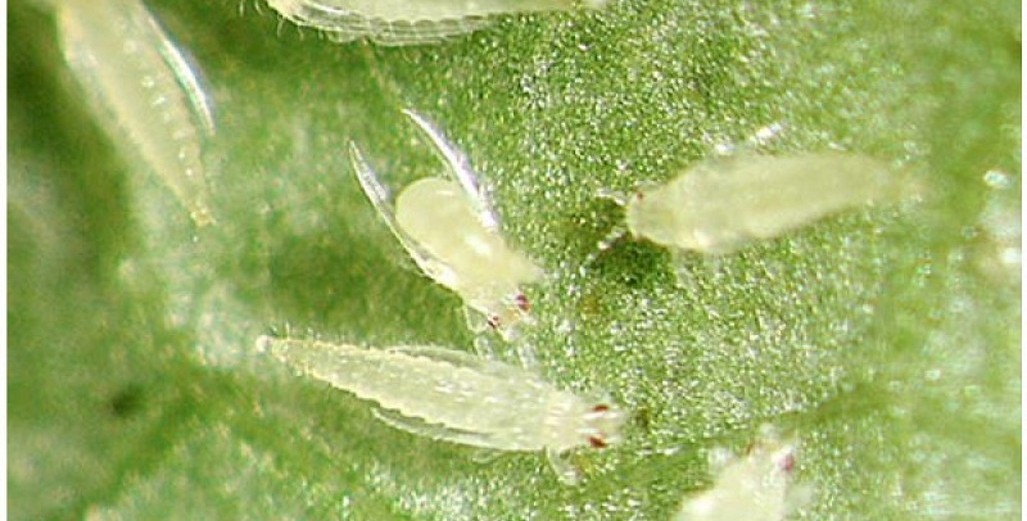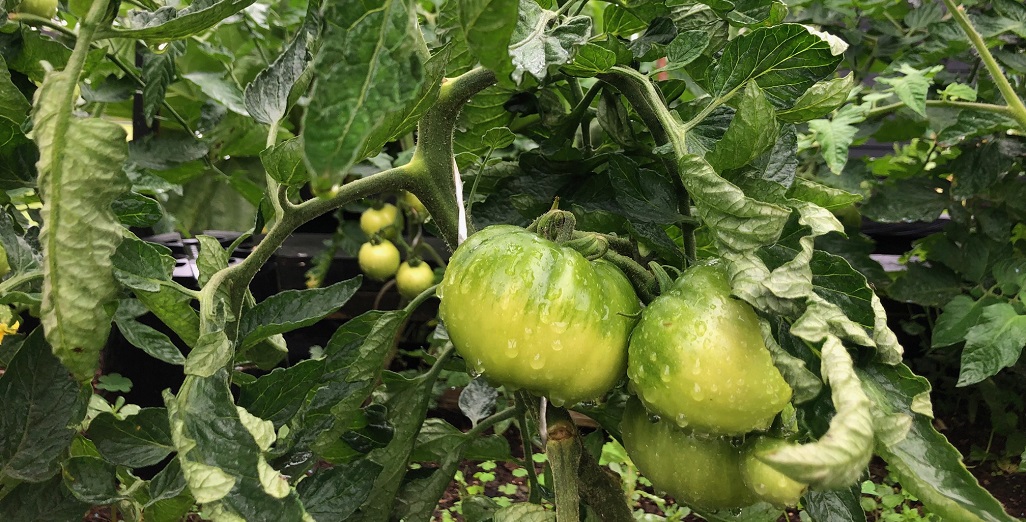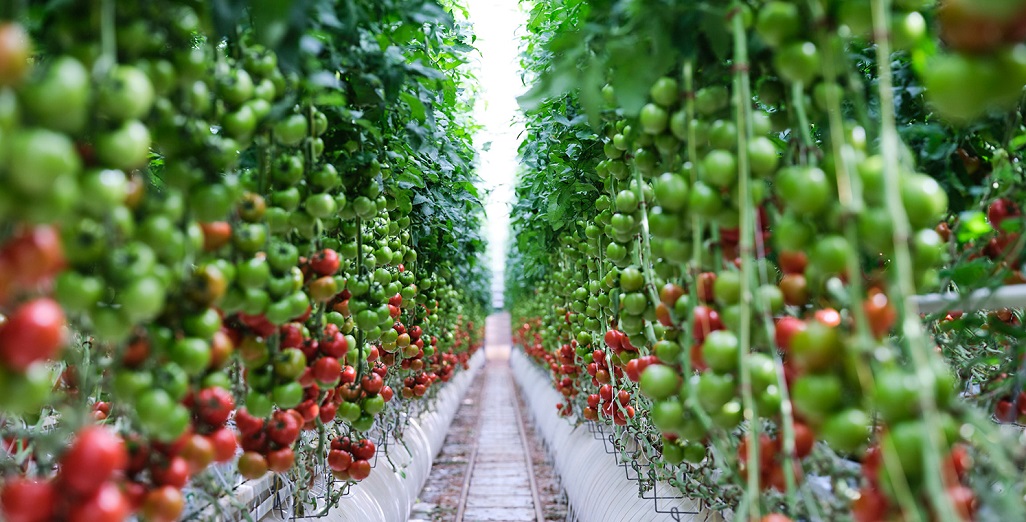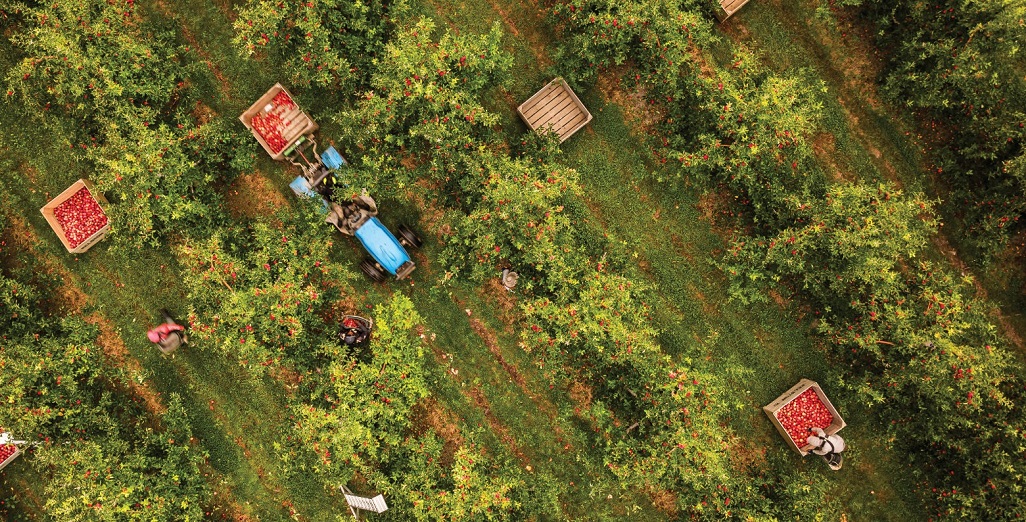Sign up here to subscribe to the Grower2grower Ezine. Every two weeks you will receive new articles, specific to the protected cropping industry, informing you of industry news and events straight to your inbox.
May 2020
Thrips Damage In May is Frustrating

Earning Potential Reduced
Growing greenhouse crops, in an area surrounded by market gardeners growing onions and potatoes, is always going to be a challenge. The approach taken, by indoor and outdoor horticulture growers, to manage insect pests is going to be different. Unless a greenhouse has insect screens, small enough to keep thrips out, then you will be pushing the proverbial up the hill. HUGE capital investment is required for insect mesh not to mention how to manage the climate.
Last February I posted an article about a thrip population explosion but to have issues in early May is a reflection of our long summer and other factors. news/post/hot-period-sparks-large-populations-of-thrips/
This week I’ve observed a fantastic telegraph cucumber crop completely savaged by thrip damage, bending countless cucumbers, rendering them unsellable. This thrip damage occurred from the 3rd to 7th fruits in the first weeks of May. Even though the thrips have been suppressed, for now, they will be back. Especially with a nice warm greenhouse to reproduce in. The options for growers when a sudden, huge influx of thrips is quickly blown into your greenhouse is limited. Beneficial insects, like Amblyseius cucumeris, work well when they have larval stages of the thrips to feed on. This is why growers possibly don’t see the need to regularly introduce this beneficial, as they don’t initially perceive they have an issue, the trouble is when the issue does suddenly appear, you’re behind the 8 ball.
Using IPM to control thrip populations needs a collective approach. I think it would be extremely beneficial to bring growers and IPM specialists together to discuss the options available to control this pest moving forward. With the aim of reducing the required reactive spraying. Spraying is needed, we all spray crops, even organic growers spray crops, but I would like to collectively figure out how to reduce spraying not eliminate because that won’t always be practical. I am certain that Amblyseius cucumeris could play an important role in controlling thrip populations and the damage they cause to cucumber crops.
I feel a workshop is required.
Below is a link to Koppert Website worth viewing. Also below is Information about Zonda Beneficials product Thripex (Amblyseius cucumeris)
https://www.koppert.com/news/keeping-thrips-under-control-plenty-of-options/
Please let me know, via email, if you would be interested in attending a workshop to discuss our ongoing approach to thrip control.
E-mail stefan@grower2grower.co.nz
I appreciate your comments. Please feel free to comment on the grower2grower Facebook page:
https://www.facebook.com/StefanGrower2grower/
Article Written and compiled by Stefan Vogrincic, Consultant, Grower2Grower
Article Edited by Marie Vogrincic, Editor, Grower2Grower
Introducing Thripex:
As thrips populations can grow rapidly it is always best to introduce Thripex at either the first sign of thrips, or when the first flowers are to be left on your crop. Thripex should be introduced into a crop with a suitable pollen source, (such as capsicums or eggplants), as soon as there are flowers open, or at the very first sign of thrips.
For crops such as cucumbers or roses, without a suitable pollen source, repeated introductions will be required through the life of the crop.
Thripex prefers a higher humidity than thrips, so misting systems can be very beneficial in hot dry summer conditions.
Several applications of Thripex may be required through the growing system, depending on the thrips pressure.
Release Rates
First introduction – 2 applications, 2 weeks apart – 50 mites/ per square meter
Preventative / Previous introduction – 500-100 mites/ 50m2 (every 14 days)
Low infestation – 25-500 mites/ 100m2 (every 14 days)
Heavy infestation – 250-500 mites/ 100m2 (every 7 days)
Storage and Handling
Once received Thripex can be stored for 1-2 days in a cool, dark place at between 10-15˚c.
Biological beneficials should be introduced into the crop as soon as possible after receipt.
The ideal environmental conditions for Thripex are:
– Relative humidity greater than 75%
– Temperatures above 20˚c for some hours of the day. Optimal temperature is between 25-30˚c.
Temperatures above 30 have a negative influence on the development of Thripex. Therefore, Thripex do not generally perform well under very dry and hot conditions.
Before introducing Thripex to any crop it is very important to consider what insecticides or fungicides have been used in the crop within the last two months. Many chemical sprays can have a long lasting residual effect on biological control agents. There is a limited number of chemicals that can be used in a crop when using beneficial mites. Please check the compatibility of certain chemicals before introducing any beneficial. Please refer to the Koppert Side Effects Guide – www.koppert.com/side-effects/.
.jpg)
Photo from Zonda Website.
CLASSIFIED
Subscribe to our E-Zine
More
From This Category

Greenhouse Production in the Future – Mike Nichols

Industry spearheads adoption of labour-saving tech with $52M boost (Australia)

a1 Apple Website Launched to Complement Brand Refresh
(Video of session now available) Excellent online webinar hosted by De Ruiter/Bayer Australia

Merry Christmas and Happy New Year 2024































